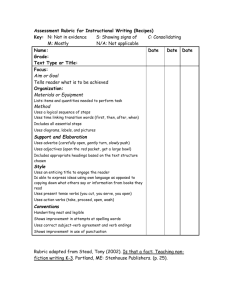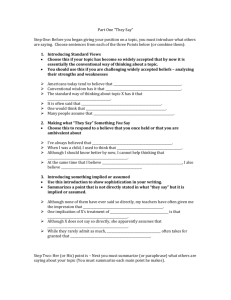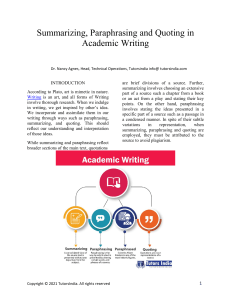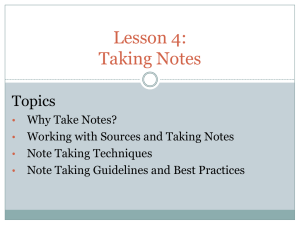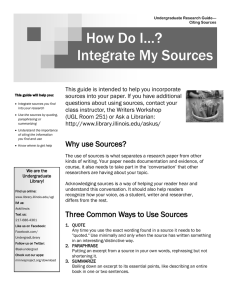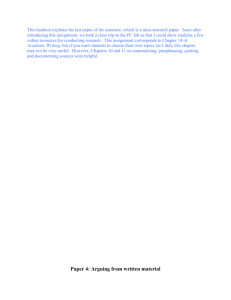Quoting and Paraphrasing (APA format)
advertisement
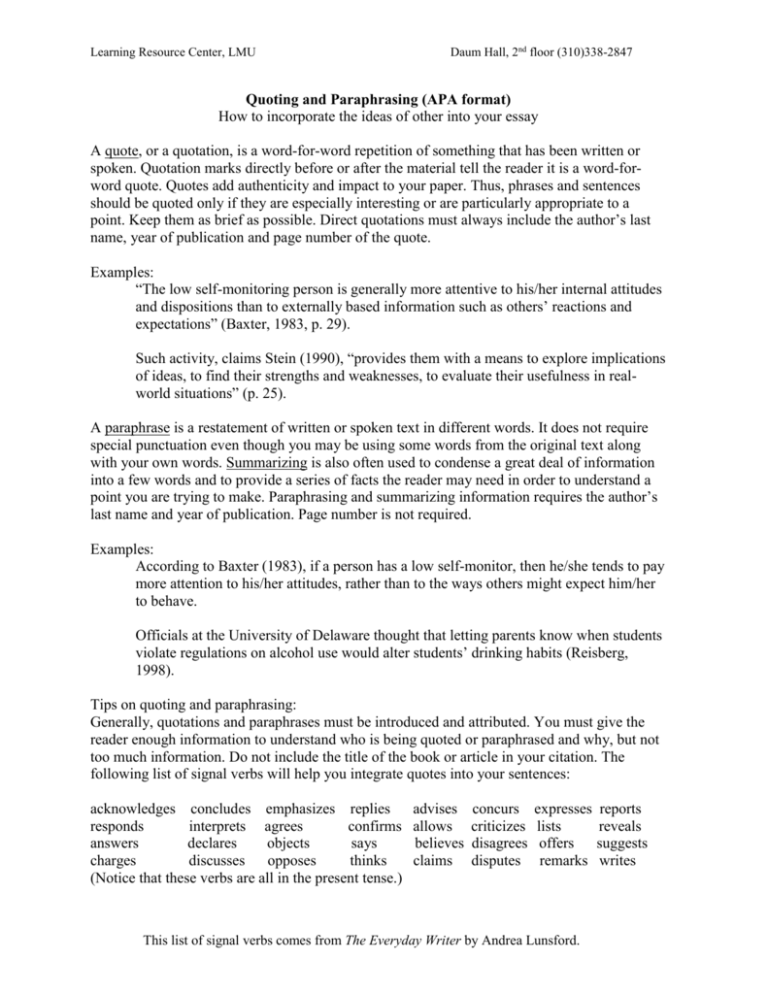
Learning Resource Center, LMU Daum Hall, 2nd floor (310)338-2847 Quoting and Paraphrasing (APA format) How to incorporate the ideas of other into your essay A quote, or a quotation, is a word-for-word repetition of something that has been written or spoken. Quotation marks directly before or after the material tell the reader it is a word-forword quote. Quotes add authenticity and impact to your paper. Thus, phrases and sentences should be quoted only if they are especially interesting or are particularly appropriate to a point. Keep them as brief as possible. Direct quotations must always include the author’s last name, year of publication and page number of the quote. Examples: “The low self-monitoring person is generally more attentive to his/her internal attitudes and dispositions than to externally based information such as others’ reactions and expectations” (Baxter, 1983, p. 29). Such activity, claims Stein (1990), “provides them with a means to explore implications of ideas, to find their strengths and weaknesses, to evaluate their usefulness in realworld situations” (p. 25). A paraphrase is a restatement of written or spoken text in different words. It does not require special punctuation even though you may be using some words from the original text along with your own words. Summarizing is also often used to condense a great deal of information into a few words and to provide a series of facts the reader may need in order to understand a point you are trying to make. Paraphrasing and summarizing information requires the author’s last name and year of publication. Page number is not required. Examples: According to Baxter (1983), if a person has a low self-monitor, then he/she tends to pay more attention to his/her attitudes, rather than to the ways others might expect him/her to behave. Officials at the University of Delaware thought that letting parents know when students violate regulations on alcohol use would alter students’ drinking habits (Reisberg, 1998). Tips on quoting and paraphrasing: Generally, quotations and paraphrases must be introduced and attributed. You must give the reader enough information to understand who is being quoted or paraphrased and why, but not too much information. Do not include the title of the book or article in your citation. The following list of signal verbs will help you integrate quotes into your sentences: acknowledges concludes emphasizes replies responds interprets agrees confirms answers declares objects says charges discusses opposes thinks (Notice that these verbs are all in the present tense.) advises allows believes claims concurs criticizes disagrees disputes expresses reports lists reveals offers suggests remarks writes This list of signal verbs comes from The Everyday Writer by Andrea Lunsford.
